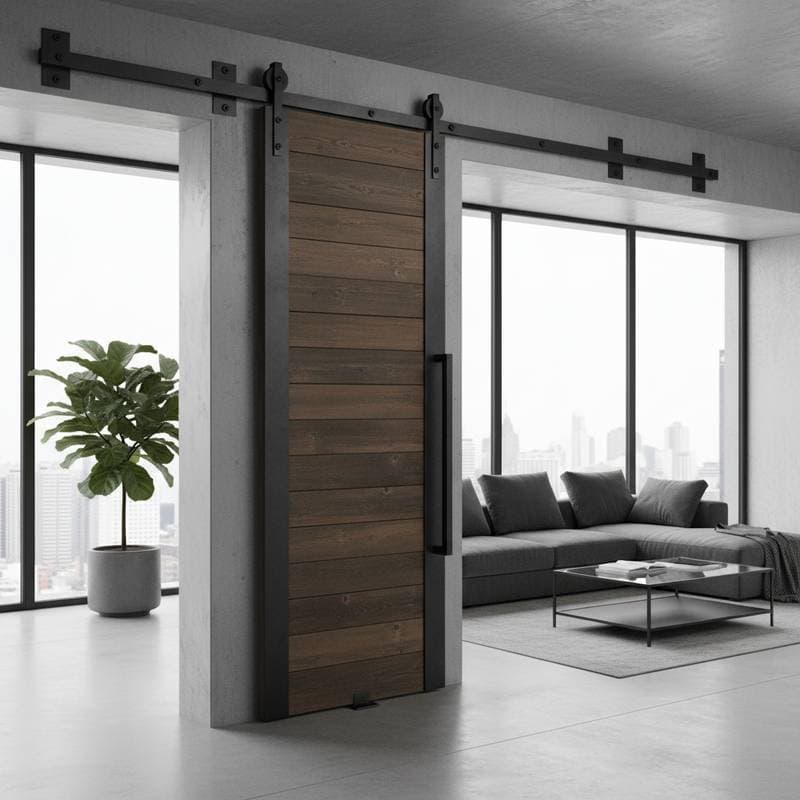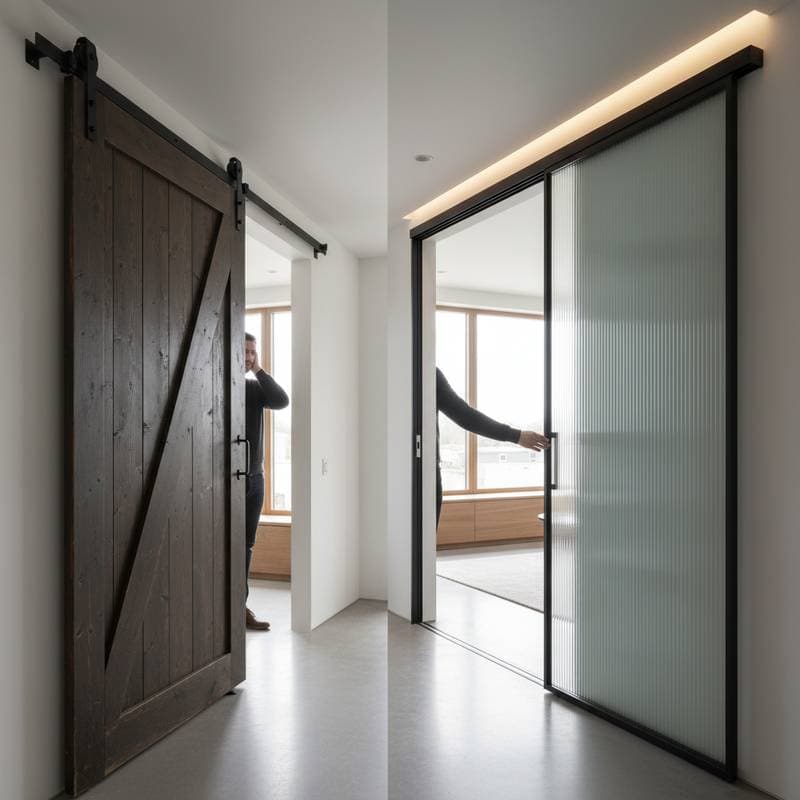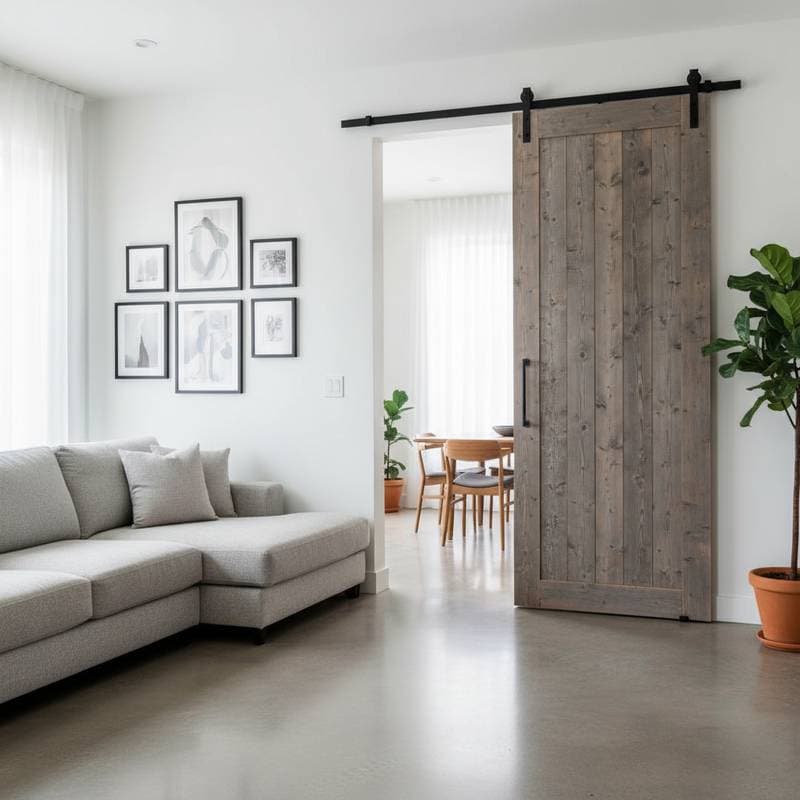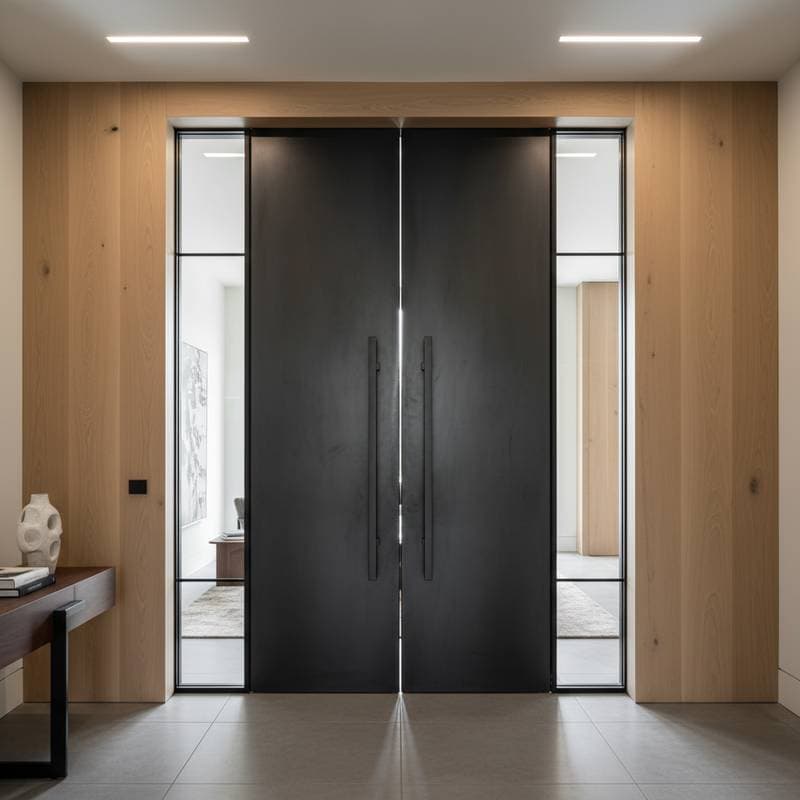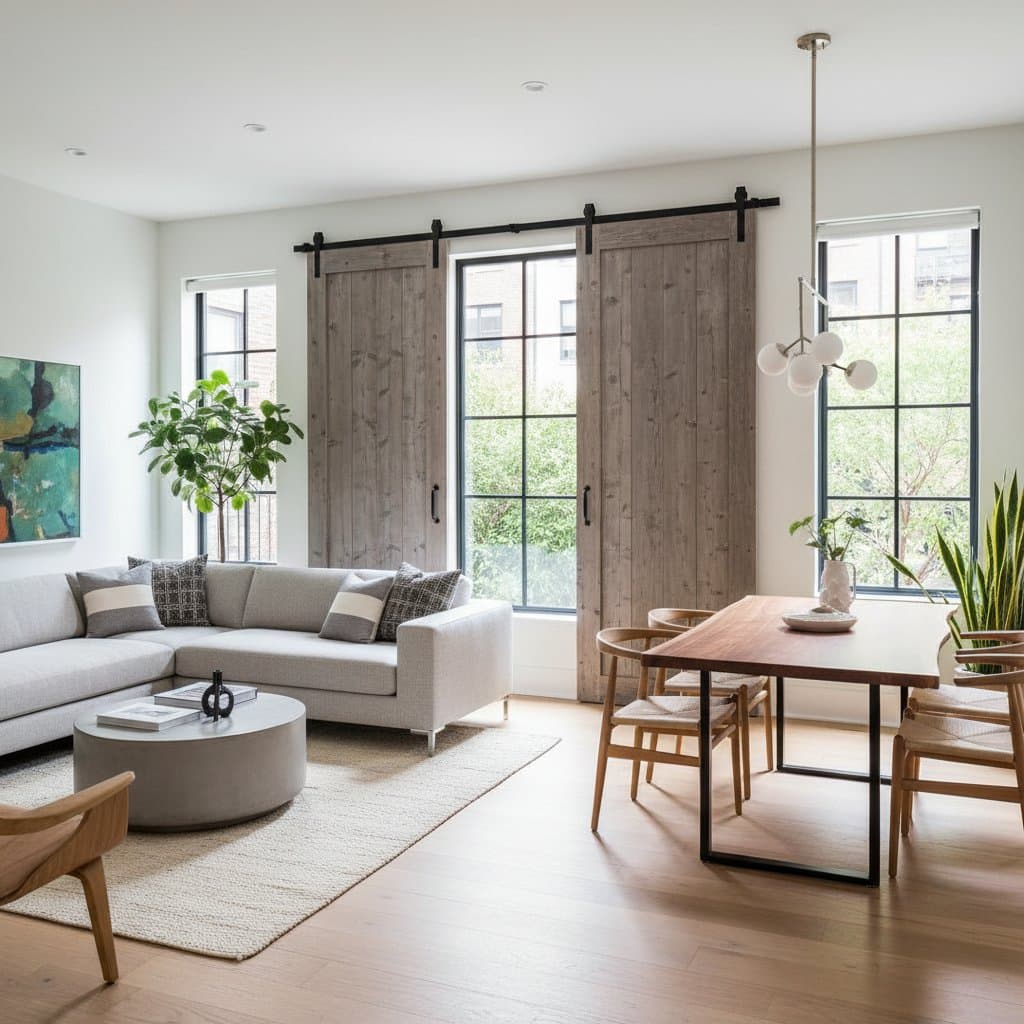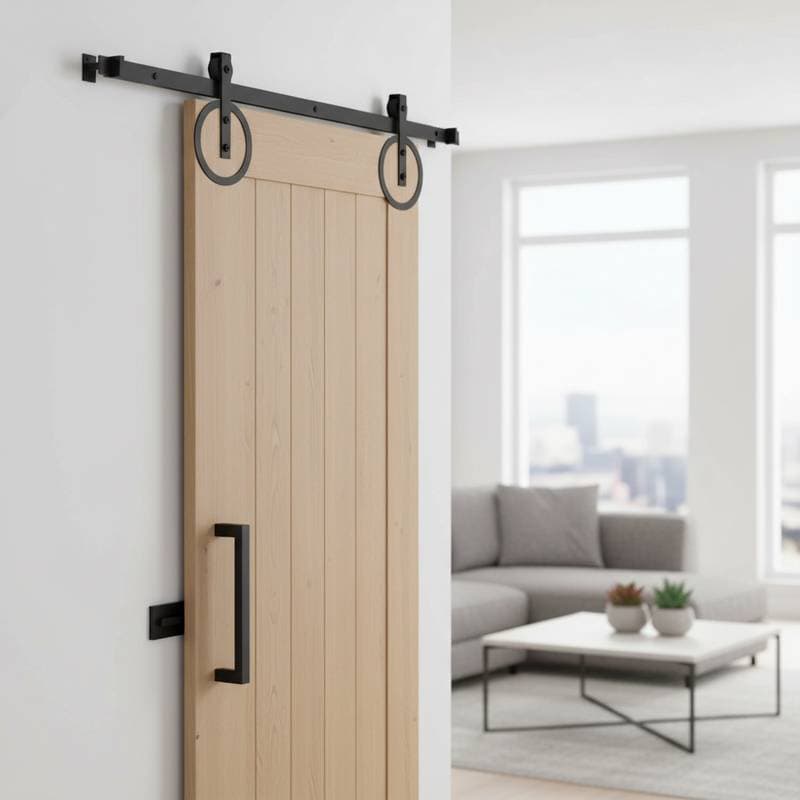Barn Door Hardware's Industrial Evolution in 2025
Barn door hardware evolves beyond its rustic origins toward a sleek industrial aesthetic in 2025. Homeowners increasingly select exposed steel tracks, matte finishes, and streamlined profiles to complement contemporary interiors. This transition merges practicality with visual impact, positioning interior doors as prominent architectural elements. The following sections explore key aspects of this industrial transformation and its implications for home renovation projects.
Project Costs and Essentials
Installation of barn door hardware typically ranges from $250 to $700 per door, covering materials and labor. Premium steel systems or custom configurations may exceed $1,000. Standard kits supply the track, rollers, brackets, and handles, though labor expenses fluctuate based on wall composition and door mass.
| Material/Service | Cost Range | Key Features |
|---|---|---|
| Standard steel kit | $250 to $450 | Durable construction with matte finish; fits standard doors |
| Heavy-duty industrial kit | $500 to $900 | Supports large or solid wood doors; enhanced load capacity |
| Custom hardware system | $900 to $1,500 | Personalized designs with powder coating or accents |
| Professional installation | $150 to $400 | Encompasses mounting, alignment, and balance adjustments |
Homeowners often choose barn doors to optimize space or delineate areas visually. The industrial style emphasizes visible components, precise engineering, and subdued tones that highlight superior workmanship rather than embellishments.
Origins of the Industrial Aesthetic
Industrial barn door hardware derives from warehouse and loft architectures, featuring robust steel parts, apparent hardware, and unrefined surfaces. These elements harmonize with polished concrete surfaces, salvaged timber, and simple illumination schemes.
Design consultant Mark Rivera of Urban Hardware Interiors observes, "Exposed hardware is no longer just functional. It is a design feature that anchors the entire room." Such installations suit expansive layouts, where doors function as separators and central attractions.
Finishes That Shape Industrial Style
Surface treatments significantly contribute to the industrial character. Preferences shift from polished surfaces to subdued, tactile options that evoke untreated metals. Popular choices encompass:
- Matte black for contemporary subtlety
- Brushed nickel for brighter industrial environments
- Oil-rubbed bronze for spaces with historical undertones
- Raw steel for genuine, robust textures
Powder-coated options provide resilience against wear and environmental damage, suiting areas with frequent use.
Elements Affecting Overall Expenses
Several variables determine the complete project budget:
- Door mass and dimensions. Substantial or extended doors demand reinforced tracks and secure fixtures.
- Wall composition. Surfaces like drywall or plaster often require supplemental supports or frames.
- Surface and composition selections. Custom hues, protective coatings, or ornate rollers elevate expenses.
- Mounting intricacy. Concealed tracks or overhead setups extend installation duration.
Additional charges apply for doors with glazed sections or damping features, which necessitate exacting assembly.
Choosing Between DIY and Expert Installation
Numerous kits promote self-installation, yet industrial variants often benefit from specialist involvement. A basic self-guided setup spans two to four hours, whereas experts finish promptly and guarantee precision. Misaligned tracks risk irregular operation or structural harm.
Professional installer Tina Morales from Precision Door Works notes, "Industrial hardware is heavier and less forgiving. Hiring a pro ensures the track is level and the door glides smoothly without strain."
Upkeep for Enduring Functionality
Constructed for longevity, industrial barn door hardware requires routine care. Clean tracks and wheels with a gentle cloth monthly to clear accumulations. Inspect bearings for fluid motion and secure any fasteners. A light lubricant application to the rail minimizes noise and prolongs service.
Incorporating Designs to Enhance Property Appeal
Industrial barn doors adapt to diverse decors, from city apartments to updated rural homes. They introduce structural depth and elevate market value through bespoke flair.
Property experts highlight that such interior enhancements draw purchasers valuing form and utility. These doors foster adaptable environments while preserving spaciousness.
Steps to Implement Your Installation
For upgrading a sliding door or adding a new one, industrial hardware delivers efficient interior renewal. Begin with precise measurements of the aperture, verify structural integrity, and select components rated for your door's specifications.
Opt for superior-grade items to achieve effortless function and extended durability. Through diligent maintenance and judicious selections, the installation merges resilient engineering with elegant form for sustained performance.

